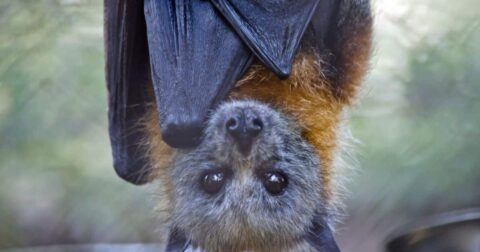Explainer
What Is Ultra-Processed Food and Why Is It Unhealthy?
Diet•7 min read
Analysis
Pandemic risk is on the rise, but researchers know the cause and how to reduce the risk.


Words by Daniel Macken
During the last 100 years there have been five pandemics, including HIV, the influenza virus and covid. We’re averaging one pandemic every seventeen years, it seems, which suggests we’ll experience another pandemic in around the year 2039.
But our pandemic risk is changing, and not for the better. According to U.C. Davis epidemiologist Jonna Mazet, PhD, just ten years ago, we saw an average of three new pathogens — an organism that can cause disease to its host — each year. Now, annually, we’re averaging five.
Researchers believe this worrying increase is linked to deforestation — the loss of forests and other wild landscapes — because forests have been keeping disease in wildlife from spreading to humans. The key to future pandemic prevention then is understanding this — when we continue to cut down forests to raise animals for meat or feed for animals that become meat, we are breaking down the barriers that stand between us and the next pandemic.
Here’s how disease spillover works. When an animal becomes infected with a disease, it can shed pathogens in a variety of ways, including excrement, scratches or bites. In 2012, the virus that causes Middle East Respiratory Syndrome or MERS is believed to have spread to humans through bat excrement on or near fruit trees, for example.
Pathogens can jump from animal species to animal species, throughout species of farmed animals, or even to humans, either directly or indirectly through fleas, ticks or mosquitos. Once inside a human host, the pathogen is free to begin spreading throughout the human population.
Livestock often serves as an “epidemiological bridge” between humans and wildlife infections, according to the United Nations Environment Programme. Clearing forests increases the contact between wildlife and livestock, and that in turn opens the door for disease to jump to farm workers and farmers.
When we lose forest, we get an increase in population density of animals that can cause disease, like bats, for example, who might be forced to relocate to surviving forests. This increased density increases the risk of the spread of infections from one animal to another.
Forest fragmentation can also alter microclimates within an ecosystem in ways that can increase populations of disease-carrying creatures. For example, increased sunlight due to thinner tree canopies could increase the temperature of pools of water, which would in turn create ideal conditions for mosquito breeding.
To make matters worse, the very deforestation that can set this chain of events off is on the rise in many parts of the world. According to data from the U.N.’s Food and Agriculture Organization, the world lost 178 million hectares of forests during the thirty year period from 1990 to 2020 — and most of this can be attributed to the way we produce food. A 2018 study in Science found that 59 percent of deforestation in Latin America — where the loss of forests is occurring at the highest rates — is caused by factory farming. In Southeast Asia, the driving force are commodity crops such as palm oil and soy that mostly goes to livestock feed and adhesives in wood products.
It’s also not just deforestation. Many types of land use change — wildfires and changes to what’s raised on an existing farm are just two examples — can also increase the opportunity for a pathogen to make that jump.
Climate change is pushing animals, including humans, to move to new areas, and that’s also a problem for pandemic risk. In a 2020 study published in Science, researchers studied the effects of changing climate on different groups of wildlife in the Arctic including eagles, caribou, black bears, grizzly bears, moose and wolves. They found that changes in temperature, sea ice, rainfall and snowfall were impacting the migration habits of some animals. Eagles, for example, have begun their migration a couple of days earlier every year since 1991.
Changing weather patterns, droughts, flooding, food scarcity and changing migration routes are just some of the reasons that animals and humans alike are entering into a new era of climate migration. This migration, in turn, results in new contact between animal species, including humans — which also means more opportunities for diseases to spread.
At a symposium held by the Aspen Institute exploring the intersection of climate change and infectious disease, researchers urged governments to adopt new strategies to stop this ever-increasing pandemic risk.
We need to adopt a “systems approach to finding solutions to diseases,” said Jonathan Sleeman, Center Director for the USGS Wildlife Health Center. Researchers should be more proactive, adopting an “upstream” strategy, for example, to stop pathogens before they can spill over to human populations.
These pathogens do not “leap out and grab us,” explained U.C. Davis’s Mazet. There’s enough evidence about the specific types of human activities that increase pandemic risk that what we should do now is very clear, researchers say. Focusing on those human activities — like animal farming — is absolutely the key to pandemic prevention.